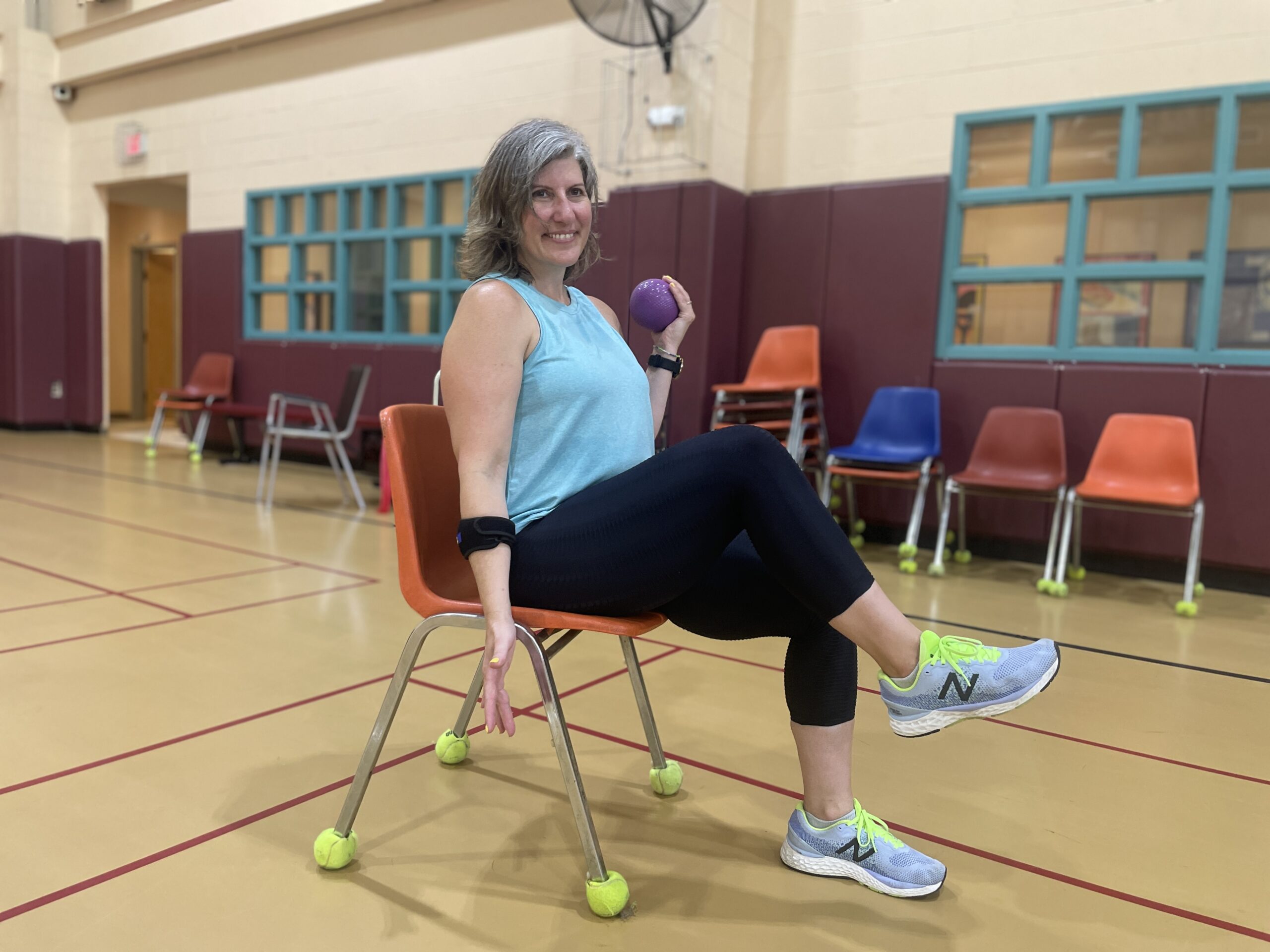When it comes to exercise, coordination and cognition are just as important as the physical actions. During a workout, your mind is processing and having the body carry out different motions. These aspects are particularly important with Parkinson’s fitness. For this edition of Fit Minute, Kim Crowley, who teaches Parkinson’s fitness at the Council on Aging, detailed the science behind the classes and demonstrated a coordination exercise that can be done by people of all abilities.
The Parkinson’s fitness program at the COA was started 10 years ago by Linda and Keith Hall, a Marblehead couple. Keith Hall has Parkinson’s disease and they wanted to offer classes with others dealing with the disease.
“Studies are showing that when you do exercise, it helps create the dopamine that’s missing in a lot of folks with Parkinson’s,” Crowley said. “Without that dopamine, they lose a little bit of control in their bodies.”
The disease is currently not treatable, however it is controllable with medicine and, as Crowley demonstrates, exercise. During her classes, she has music playing constantly, as it helps those in the class retain their cognition and coordination.
“A lot of people respond to music,” she said. “In my classes I always have music going and I typically have exercises going to the beat.”
For the coordination exercise, Crowley demonstrated a sitting arm curl and leg raise. Sitting up with good posture, Crowley said to grab a very light dumbbell or a small medicine ball that can be held in one hand. At the same time, you will curl your arm up to your shoulder while raising your leg upward at a roughly 45-degree angle.
“A bicep curl is a nice curl up and down, bending and straightening the arm,’ Crowley said. “At the same time, we’ll use that other leg and just lift and lower the knee.”
Demonstrating with a 2-pound medicine ball, she added that if the weight is too much, the exercise can be done without added weight or lighter weight. Crowley recommends doing 16 repetitions per side, depending on the weight being used for the bicep curls.
The exercise works a number of muscle groups all over the body.
“There’s a lot of stuff happening, biceps, quads, hip, and abdominal muscles,” Crowley said.
Though the exercise is used heavily in her Parkinson’s classes, it is great for anyone working on coordination, muscle strengthening, or improving their cognitive abilities.
“It’s not just a Parkinson’s patient exercise,” she said. “It really is for cognitive development, its for abs, quads, hip, and the biceps.”

